When attempting to mount a file system on Linux, encountering the error message “failed to mount bad option bad superblock” can be perplexing. This issue can arise with both ext4 and NTFS file systems. In this comprehensive guide, we will walk you through the steps to troubleshoot and resolve this mounting error for both file system types.
Table of Contents
What does the error mean?
When you encounter the error message “failed to mount bad option bad superblock” on Linux, it signifies an issue during the process of mounting a filesystem. Let’s break down the components of this error message to understand it better:
- “failed to mount”: This part indicates that the system was unable to successfully mount the specified filesystem.
- “bad option”: The error points to an incorrect or unsupported option provided during the mounting process. This could be an invalid parameter or a misconfiguration.
- “bad superblock”: The “superblock” is a critical metadata structure in a filesystem that contains essential information about the filesystem’s structure. The term “bad superblock” suggests that there might be corruption or damage to this crucial part of the filesystem.
Troubleshooting for NTFS File System
When faced with the “failed to mount bad option bad superblock” error on an NTFS file system, effective troubleshooting is essential. Follow these steps to address the issue, successfully mount the NTFS partition, and configure it to mount automatically at boot.
Check NTFS-3G Installation
Ensure that the NTFS-3G driver, responsible for mounting NTFS partitions on Linux, is installed on your system.
# Install NTFS-3G using your package manager
sudo apt-get install ntfs-3g # For Debian/Ubuntu
sudo dnf install ntfs-3g # For Fedora/Red HatCheck NTFS Partition Integrity
Use the ntfsfix command to attempt fixing common NTFS inconsistencies.
sudo ntfsfix /dev/sda3Replace /dev/sda3 with the actual NTFS partition device.
Specify NTFS Filesystem Type and Create a Mount Point
First, attempt to mount the partition using udisksctl
udisksctl mount -b /dev/sda3Replace /dev/sda3 with the actual partition you’re trying to mount. If this succeeds, your problem is solved. If it fails, it will display the intended mount point (e.g., /media/ashiqur/Media).

You can see your desired mount point and use that mount point to create mount point and mount the disk.
Create the Mount Point and Mount the Drive
Before attempting to mount the NTFS partition, ensure you specify the correct filesystem type and create a mount point
sudo mkdir -p /mnt/your_mount_pointReplace /mnt/your_mount_point with the desired mount point. For my case it was /media/ashiqur/Media.
Mount the NTFS partition with the correct filesystem type:
sudo mount -t ntfs-3g /dev/sda3 /mnt/your_mount_pointReplace /dev/sda3 and /mnt/your_mount_point with the actual partition and mount point you’re trying to mount. If you don’t see any errors, the problem has been solved.
Automatically Mount on Boot
To mount the NTFS partition automatically at boot, find the UUID of the partition using the blkid command
sudo blkid /dev/sda3Replace /dev/sda3 with with the actual partition you’re trying to mount.
Look for the entry associated with your NTFS partition. It will resemble something like this:
/dev/sda3: UUID="XXXXXXXX-XXXX-XXXX-XXXX-XXXXXXXXXXXX" TYPE="ntfs" PARTUUID="XXXXXXXX-XX"Copy the UUID value.
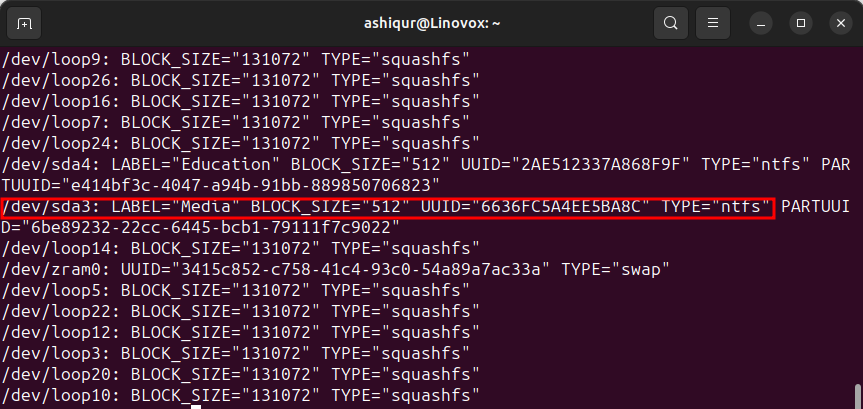
Add Entry to /etc/fstab with UUID:
Open the /etc/fstab file using a text editor:
sudo nano /etc/fstabAdd a line at the end of the file using the UUID. Replace YOUR_UUID with the actual UUID you obtained in the previous step.
UUID=YOUR_UUID /mnt/your_mount_point ntfs-3g defaults,auto 0 0Replace /mnt/your_mount_point with the desired mount point for your NTFS partition.
Warning: Ensure you specify the correct mount point in the /etc/fstab file. An incorrect mount point may cause your system to fail to boot properly. Double-check the path and syntax before saving the file.
Save the file and exit the text editor.
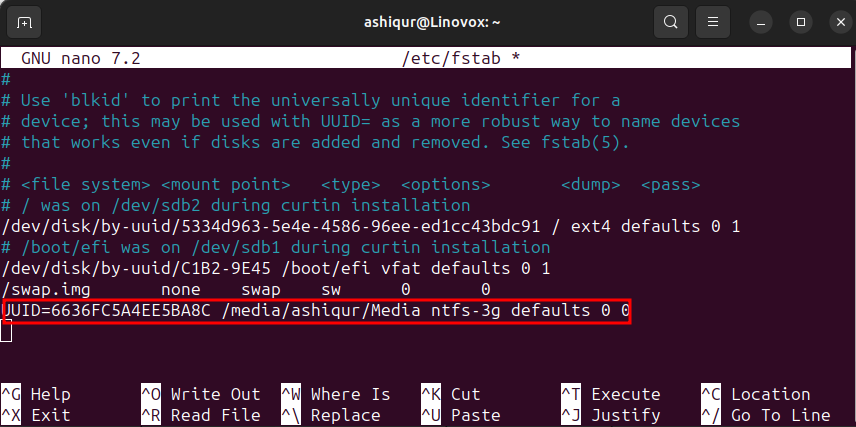
Applying fstab Changes
Use mount -a to mount all filesystems defined in /etc/fstab.
sudo mount -aThis will ensure the partition is mounted at boot.
Use Alternative Mount Options
Explore specific mount options to avoid potential conflicts. For instance:
sudo mount -t ntfs-3g -o remove_hiberfile /dev/sda2 /mnt/your_mount_pointThe remove_hiberfile option is useful if the NTFS partition was hibernated in a Windows system.
Troubleshooting for Ext4 File System
When encountering the “failed to mount bad option bad superblock” error on an ext4 file system, a systematic approach to troubleshooting is crucial. Follow these steps to address the issue, successfully mount the ext4 partition, and configure it to mount automatically at boot.
Check Filesystem Type and Create a Mount Point
Before attempting to mount the ext4 partition, ensure you specify the correct filesystem type and create a mount point.
# Create a mount point
sudo mkdir /mnt/your_mount_point
# Mount the ext4 partition with the correct filesystem type
sudo mount -t ext4 /dev/sda2 /mnt/your_mount_pointReplace /dev/sda2 with the actual partition you’re trying to mount and /mnt/your_mount_point with the desired mount point.
Check Superblock
The superblock is essential for the integrity of the ext4 file system. If it’s damaged, you may encounter mounting issues. Use the fsck command to check and repair the ext4 filesystem.
sudo fsck /dev/sda2Follow the on-screen prompts to fix any detected issues.
Backup Data
Before attempting any repairs, it’s crucial to create a backup of your data. Use tools like dd or ddrescue to create an image of the entire disk or partition.
# Create a backup image (adjust the path accordingly)
sudo dd if=/dev/sda2 of=/path/to/backup.img bs=4MReplace /dev/sda2 with the actual partition device and adjust the path accordingly.
Use Alternate Superblocks
If the primary superblock is damaged, you can try mounting the ext4 filesystem using an alternate superblock. Specify the backup superblock with the -b option.
sudo mount -t ext4 -o sb=alternate_superblock /dev/sda2 /mnt/your_mount_pointReplace alternate_superblock with the actual block number of an alternate superblock.
Recreate Filesystem
If the ext4 filesystem is severely corrupted, recreating it might be necessary. Be aware that this action will result in data loss.
sudo mkfs -t ext4 /dev/sda2After recreating the filesystem, restore your data from the backup.
Automatically Mount on Boot
To mount the NTFS partition automatically at boot, find the UUID of the partition using the blkid command
sudo blkidLook for the entry associated with your NTFS partition. It will resemble something like this:
/dev/sda3: UUID="XXXXXXXX-XXXX-XXXX-XXXX-XXXXXXXXXXXX" TYPE="ntfs" PARTUUID="XXXXXXXX-XX"Copy the UUID value.
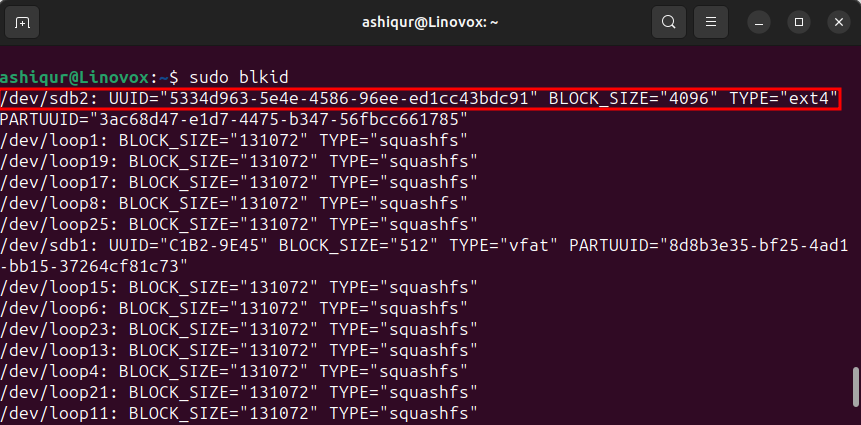
Add Entry to /etc/fstab with UUID:
Open the /etc/fstab file using a text editor:
sudo nano /etc/fstabAdd a line at the end of the file using the UUID. Replace YOUR_UUID with the actual UUID you obtained in the previous step.
UUID=YOUR_UUID /media/ashiqur/Media ext4 defaults,auto 0 0Replace /media/ashiqur/Media with the desired mount point for your NTFS partition.
Save the file and exit the text editor.
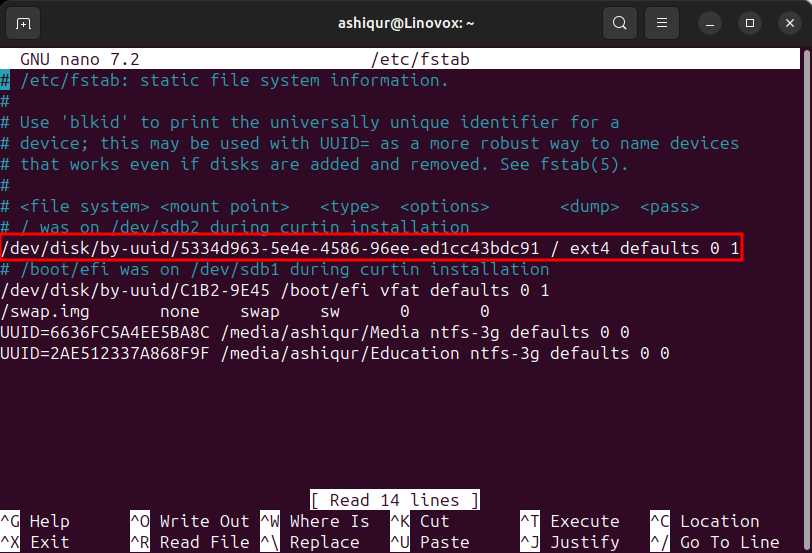
Conclusion
In this step-by-step tutorial, we have discussed the necessary steps to fix the mounting problem of both ext4 and NTFS file systems. I hope this discussion has solved your issue. If you find this tutorial useful, don’t forget to share it with your friends and colleagues.
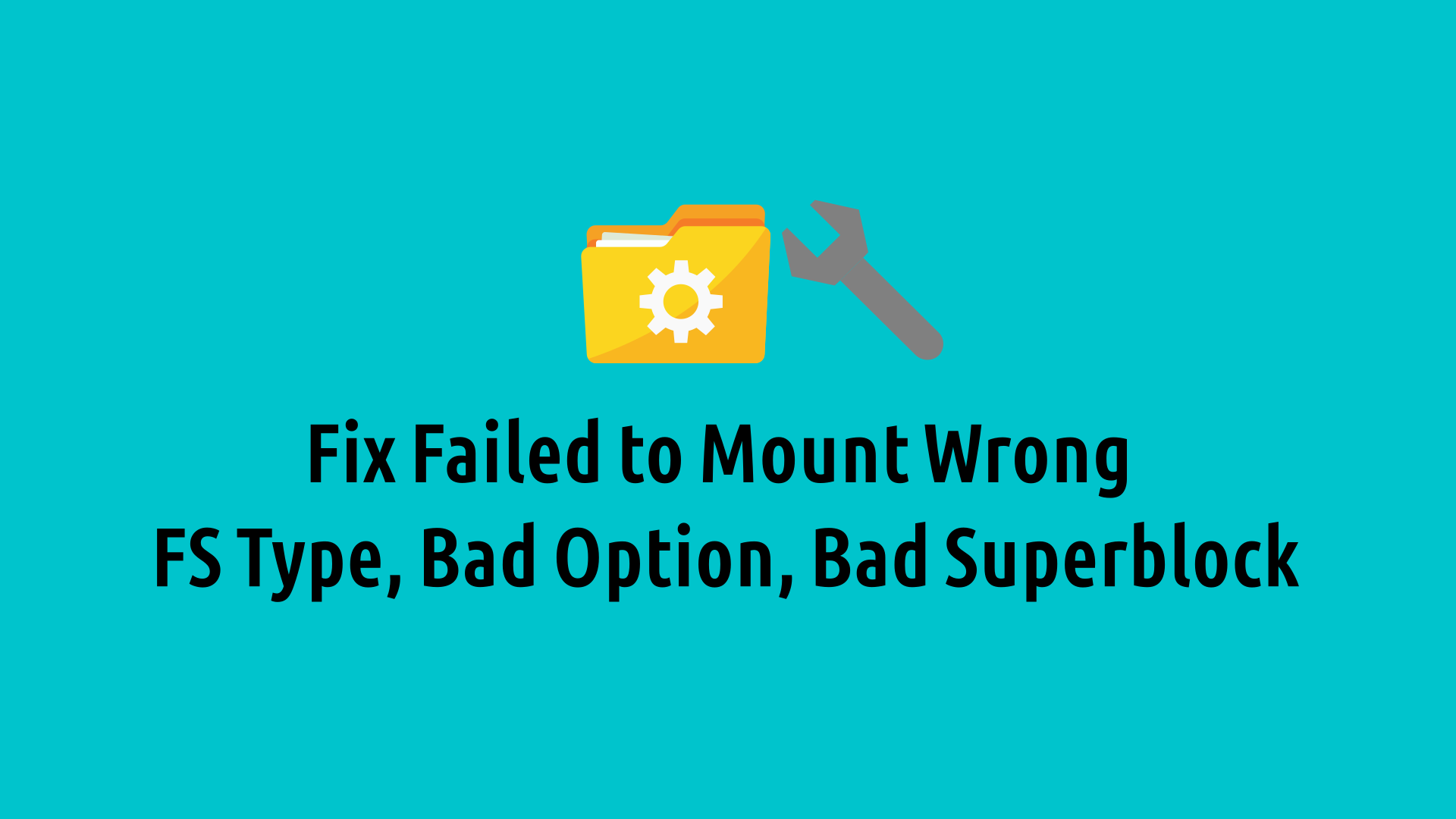





Thank you
You are most welcome.
Thank you, worked like a charm.